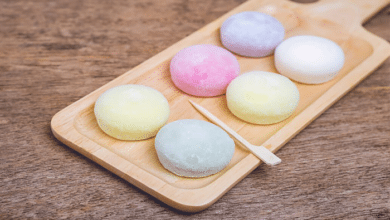The Art of Cooking Whole Fish: Tips and Tricks from Top Chefs

For centuries, cultures around the world have revered the practice of cooking whole fish. It’s a simple yet elegant way to prepare seafood, showcasing the natural flavours and textures of the entire fish. While it might initially seem daunting, mastering this culinary art form is easier than you think. You can impress your guests with a delicious and impressive whole fish dish with the right techniques and helpful tips.
Choosing the Right Whole Fish
The first step to cooking a whole fish is selecting the right one. Here are some key things to consider:
- Freshness is paramount: Look for bright, clear eyes, firm flesh that springs back when pressed, and no fishy smell. Gills should be bright red or pink, not brown or grey.
- Size matters: Choose a size that will fit comfortably in your chosen cooking pan or oven.
- Variety is key: Different fish cook best with different methods. Popular choices for whole fish cooking include snapper, barramundi, trout, salmon, bream, and flathead.
Preparing Your Whole Fish
Once you’ve chosen your fish, it’s time to prepare it for cooking. Here’s what you need to do:
- Scaling: Some fish, like bream and snapper, have tough scales that need removing. Use a sharp knife or a fish scaler to scrape off the scales, working from tail to head.
- Gutting: Make a small incision along the belly of the fish, just below the gills. Carefully remove the internal organs and rinse the cavity thoroughly with cold water.
- Gilling: For some methods, like grilling or baking, you may want to remove the gills as they can impart a bitter flavour during cooking.
- Scoring: Scoring involves making shallow diagonal cuts across the thickest part of the fish on both sides. This helps the fish cook more evenly and allows for better flavour penetration of marinades and seasonings.
- Seasoning: Season the fish cavity and exterior with salt, pepper, or your favourite spice blend. For additional flavour, you can also stuff the cavity with herbs like lemon thyme, rosemary, or dill.
Popular Cooking Methods for Whole Fish
There are several ways to cook a whole fish, each offering unique benefits and flavour profiles:
- Baking: This is a versatile and foolproof method for beginners. Preheat your oven to the recommended temperature for your chosen fish and bake on a baking sheet or in a dish lined with parchment paper. Baste the fish occasionally with melted butter or olive oil for a crispy skin.
- Pan-frying: This method results in a beautifully browned and crispy skin. Heat oil in a pan over medium-high heat, carefully sear the fish on both sides until golden brown. Reduce the heat and cook with a fork until the flesh is opaque and flakes easily.
- Grilling: Grilling adds a smoky flavour to your whole fish. Preheat your grill to medium-high heat and brush the fish with oil before placing it on it. Cook for a few minutes per side or until the flesh flakes easily with a fork.
- Poaching: Poaching is a gentle cooking method that results in moist and tender fish. Bring a pot of water or court bouillon (aromatic broth) to a simmer, add the fish, and cook until the flesh is opaque and flakes easily with a fork.
Tips for Success
- Use a fish spatula: This wide, flexible tool will help you easily flip the fish without damaging its delicate flesh.
- Don’t overcook: The key to perfectly cooked whole fish is to achieve moist and flaky flesh. Err on the side of undercooking, as the fish will continue to cook slightly even after removing it from the heat source.
- Check for doneness: The best way to check if your whole fish is cooked through is to gently insert a sharp knife into the thickest part of the flesh. It should flake easily and appear opaque, not translucent.
- Garnish and serve: Enhance the presentation of your whole fish with a simple garnish like lemon wedges, fresh herbs, or a drizzle of your favourite sauce.
Conclusion
Cooking a whole fish is a rewarding culinary experience that allows you to appreciate the full potential of this versatile ingredient. By following these tips and tricks from top chefs, you can master this technique and create delicious and impressive whole fish dishes that will leave your guests wanting more.




